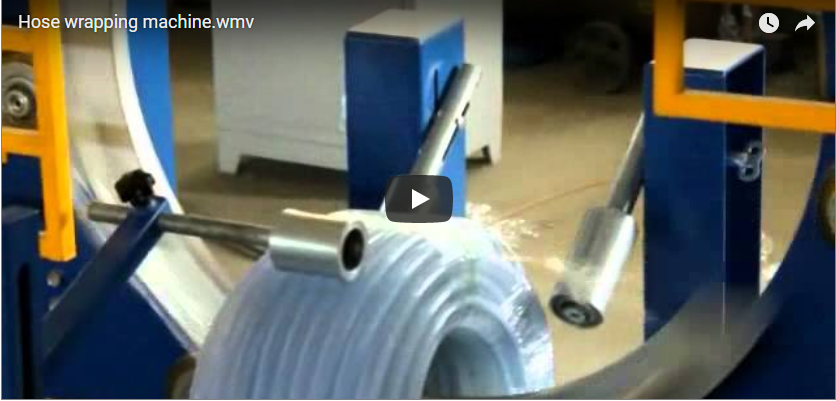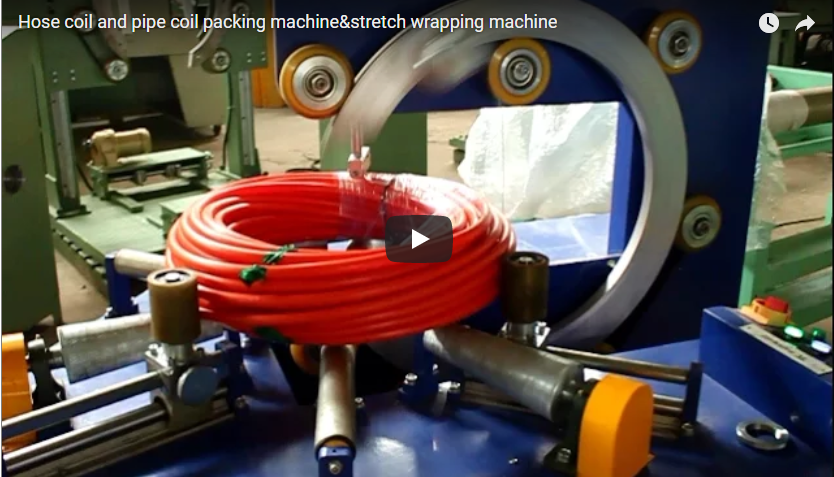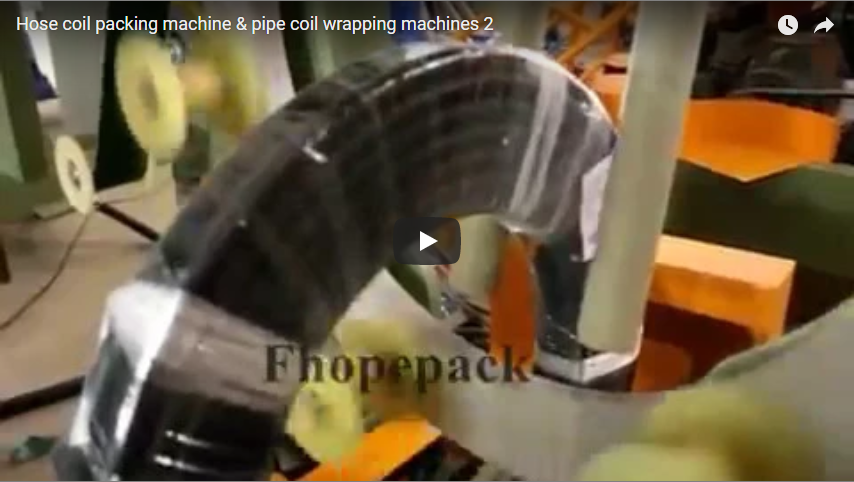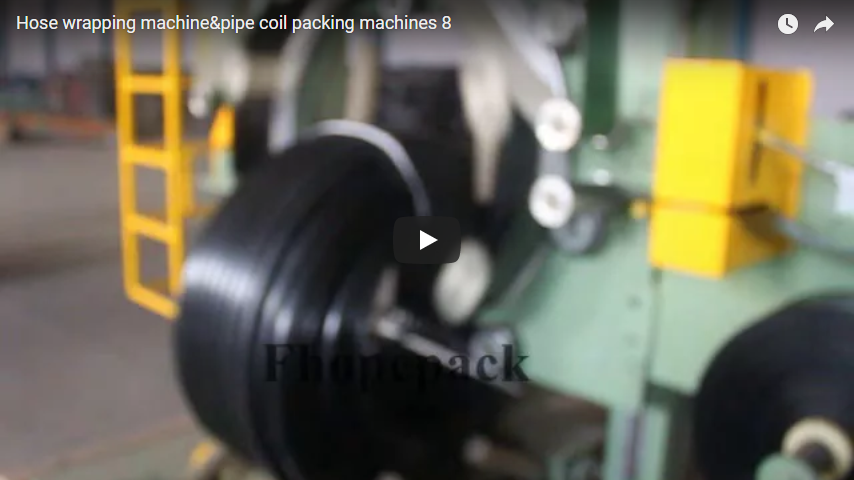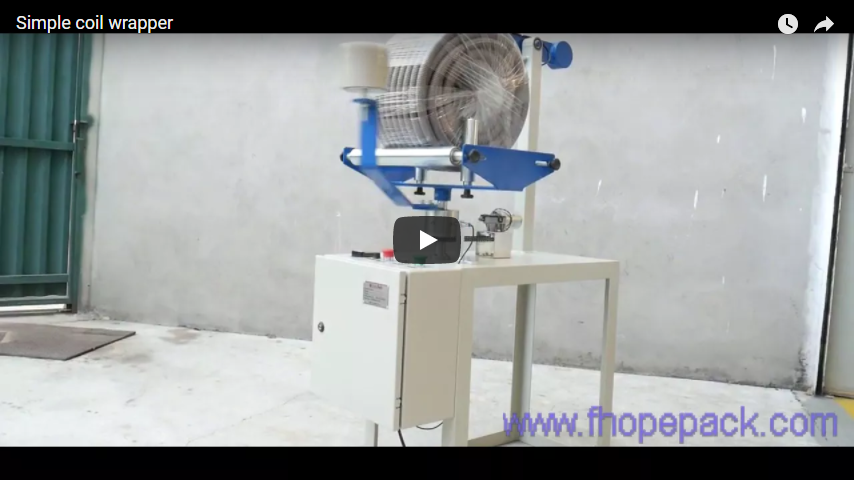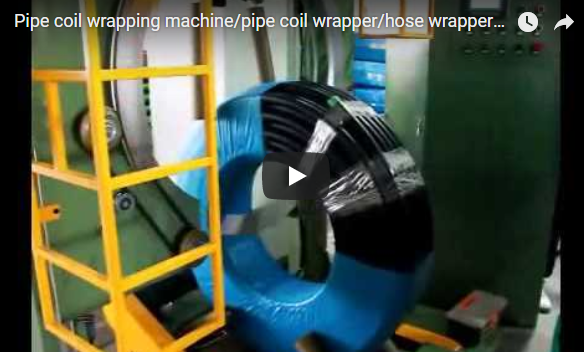Optimizing Packaging: A Deep Dive into the Horizontal Wrapping Machine for Flexible Corrugated Pipes and Hoses
Handling and packaging large, flexible coils like corrugated pipes and industrial hoses presents unique challenges for manufacturers and distributors. Ensuring these products reach their destination undamaged, while maintaining operational efficiency and controlling costs, requires specialized equipment. The horizontal-type wrapping packing machine offers a robust and automated solution designed specifically for these applications.
Let's explore the technical capabilities and practical benefits of this essential piece of industrial packaging machinery.
1. The Challenge: Securely Packaging Bulky, Flexible Coils
Traditional methods of packaging flexible pipe and hose coils often involve significant manual labor, leading to inconsistencies, potential product damage during handling, and slower throughput. Key challenges include:
- Product Protection: Unsecured coils are susceptible to abrasion, contamination, and unraveling during storage and transit.
- Labor Intensity: Manually wrapping large, heavy coils is physically demanding and time-consuming.
- Inconsistent Wrapping: Manual application can result in uneven tension and coverage, compromising load stability.
- Material Waste: Inefficient manual wrapping can lead to excessive use of packaging materials like stretch film.

hose coil wrapping machine by film 2. The Solution: Automated Horizontal Coil Wrapping
The horizontal flexible corrugated pipe and hose coil wrapping machine addresses these challenges directly. By automating the wrapping process, it provides a consistent, secure, and efficient method for packaging coils. The horizontal orientation simplifies loading and unloading, integrating smoothly into many existing production or warehousing workflows.
3. Key Features and Technical Specifications
Understanding the technical capabilities is crucial for assessing suitability. While specific models vary, typical features include:
- Coil Handling Capacity:
- Inner Diameter (ID): Accommodates a range defined by the specific model (e.g., 300mm - 700mm).
- Outer Diameter (OD): Capable of handling large diameters (e.g., 500mm - 1200mm).
- Coil Width: Suitable for various widths (e.g., 100mm - 500mm).
- Coil Weight: Designed for significant loads (e.g., up to 500kg or more).
- Wrapping Materials: Primarily utilizes LLDPE stretch film, but compatibility may extend to VCI film (for anti-corrosion), PE film, or even kraft paper depending on configuration.
- Wrapping Speed: Adjustable ring speed (e.g., 20-90 RPM) allows optimization for different coil sizes and desired wrap tightness. Throughput is often measured in coils per hour.
- Control System: Typically features a PLC (Programmable Logic Controller) with an HMI (Human-Machine Interface) for ease of operation, parameter setting (e.g., overlap rate, tension), and diagnostics. Offers semi-automatic or fully automatic operation modes.
- Film Tension Control: Employs mechanical or motorized pre-stretch systems (up to 250-300%) to maximize film yield and ensure consistent wrap tension.
- Power Requirements: Standard industrial power supply (e.g., 380V, 3-Phase, 50Hz, specifications may vary).
- Optional Features: May include integrated top press rollers for unstable coils, automatic film clamping and cutting units, safety fencing, and infeed/outfeed conveyor systems for line integration.
4. Operational Workflow: A Streamlined Process
From an operator's perspective, using the machine involves straightforward steps:
- Loading: The pipe or hose coil is placed onto the machine's support rollers, often via forklift, crane, or conveyor. The horizontal design makes this easier compared to vertical wrappers for large coils.
- Initiation: The operator selects the wrapping program via the HMI and starts the cycle.
- Wrapping Cycle: The wrapping ring, carrying the film roll, rotates around the coil's outer diameter while the support rollers rotate the coil itself. This synchronized movement ensures complete coverage. The film is applied with pre-set tension and overlap.
- Film Cutting & Securing: In automatic modes, the machine clamps, cuts, and wipes the film tail against the coil at the end of the cycle. Semi-automatic versions may require manual cutting.
- Unloading: The securely wrapped coil is removed from the machine, ready for storage or shipment.
5. Real-World Benefits: More Than Just Wrapping
Investing in a horizontal coil wrapper delivers tangible advantages felt across the operation:
- Reduced Labor Costs: Significantly decreases the manual effort required for wrapping, freeing up personnel for other tasks. A process that might take two people several minutes manually can be done automatically in under a minute.
- Improved Product Protection: Consistent, tight wrapping secures the coil, reducing the risk of damage from handling, moisture, and dust. This directly translates to fewer customer complaints and returns.
- Enhanced Load Stability: Uniform wrapping ensures coils are stable for stacking and transportation.
- Material Savings: Precise control over film stretch and overlap minimizes packaging material consumption compared to manual methods. Pre-stretch systems can effectively double the film length, cutting material costs significantly.
- Increased Throughput: Automating the wrapping process speeds up the entire packaging workflow, crucial for high-volume operations.
- Better Ergonomics & Safety: Reduces strenuous manual tasks, improving workplace safety.
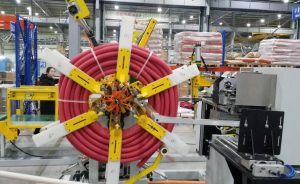
automatic coiler for hose and plastic pipe 6. Customization: Tailoring to Your Application
These machines are rarely one-size-fits-all. Customization options allow tailoring to specific operational needs:
- Integration: Can be designed to integrate seamlessly with existing conveyor systems for a fully automated packaging line.
- Material Handling: Modifications for specific coil types or handling requirements (e.g., non-standard shapes, delicate surfaces).
- Environment: Options for operation in specific environmental conditions (e.g., washdown environments).
7. Conclusion: A Strategic Investment for Efficiency and Protection
The flexible corrugated pipe and hose coil wrapping packing machine in horizontal type is far more than just a wrapper; it's a strategic investment in operational efficiency, product integrity, and cost control. For distributors and manufacturers dealing with these bulky products, automating the wrapping process delivers significant improvements in speed, consistency, safety, and material usage. By ensuring coils are securely and professionally packaged, it enhances brand perception and reduces the costly impact of transit damage.
https://www.fhopepack.com/Coil_packing_machine.html
For inquiries or specific requirements, contact: info@fhopepack.com

